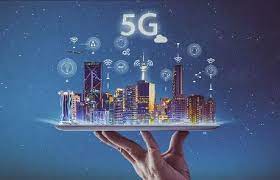
5G Drivers for the Technology
 image ©Redline Group
image ©Redline Group
A familiar question - why is 4G not good enough? 5G has 3 (potential) impovements over the 4G network namely more capacity, faster communications and lower latency. With some or all of these features many more applications become possible. There are 3 significantly different use-cases for 5G that lead to the 5 applications described below that will require 5G technology.
- Massive numbers of connections allowing millions if not billions of IoT devices to be connected (mMTC)
- Ultra fast communications, albeit not large amounts of data. Use of communications in real-time control and real-time applications. (uRLLC)
- Enhanced mobile broadband. (eMBB)
- Video / TV Initially a simple demand, let's have high definition TV rather than standard TV and while we are there ensure that a feature film, in high definition, can be downloaded in a short time for off-line viewing. A fast network such as 5G will be able to deliver on these requirements in a way that current delivery mechanisms such as Satellite and OTA cannot. So it is likely that much of this video or TV demand will move to online and mobile. This can also feed different subscription models, such as the Netflix model, or paying for prime viewing as Sky supports. In fact, an intelligent advert driven model will be more adaptive to the user than the current model. Another feature of 5G is the move of services away from the core, so suppliers could stream a single copy of live TV or cache a video nearer to the user thus freeing up the network.
- IoT, Connected Homes and Smart Cities. There are many devices on the market that will add some smartness to the home, including remote heating control and security. Many of these devices work by themselves and there are few systems that link this all together to produce a totally connected home. 5G will aid the connection of these devices and link in with other devices that are only just coming on the market, smart white goods is an example. But what about fitness and healthcare? Again remote monitoring of an individual for fitness or health reasons has major benefits for society and with a significant proportion of the population being monitored an better network is needed. Smart Cities are starting to be built with information systems, giving details of nearest parking spaces, public transport, as well as adverts for shops potentially providing income to support these developments. Additionally control systems such as traffic management, visitor management, crowd control can be achieved with 5G.
- Improved Broadband Much of the urban UK has moved broadband from FTTC to FTTP - fibre to the property. However in rural areas there has been less progress in updating the home and business broadband. Even with FTTP, the fibres only solve the static problem. Many people require broadband on the move be that moving to different static locations, walking through an urban environment, driving up the motorways or travelling by train or bus. The higher speed and greater capacity of 5G will enhance the mobile broadband experience of many allowing working on the move or indeed anywhere / anytime. A better mobile broadband can be used where the best static broadband is FTTC. Indeed THREE see the mobile (5G) network as the future of home broadband. A speed of 1Gbps is possible with 5G, a figure similar to that quoted for FTTP, with the ability to deliver at a lower cost.
- Real-time control
Driverless cars have been a vision for years. As well as the technology within
the vehicle, these cars would have to communicate with the environment to produce
a fully workable driverless car. Some data would be needed real-time and
as such a network with litle to no lag is important. Even if the
top aim of driverless cars cannot be achieved soon, more autonomous actions
will be built into cars and other vehicles again requiring a real-time
network.
Scary as it may sound, virtual critical medical operations are also possible at a distance via a reliable real-time 5G network with the surgeon manipulating the equipment and viewing the results on a screen. Currently some very delicate operations require the surgeon to work with equipment doing the actual surgery. A human does not have the delicacy of touch that the machine has. And because it is delicate the surgeon will view the surgery on a screen. It is only a small step from this to remote surgery. - VR - Virtual Reality Virtual Reality can enhance a film experience, can make computer games all the more encompassing. They can add to the experience at sports or music venues with the ability to see things that are not in eyesight, or repeat the "good bits". At a football match the crowd only see a goal once. VR over a comprehensive mobile network could stream the "highlights" to the crowd or indeed other subscribers. What about VAR - everyone could clearly see the VAR for an 'event' in a match and have their own opinion! Similarly in cricket, playbacks of potential wickets can be delivered to the crowd via the mobile network through their phone. A high capacity network would be required to achieve this and 5G would be a contender.
© mobilephonetechnology.co.uk all rights reserved 2017-2025
